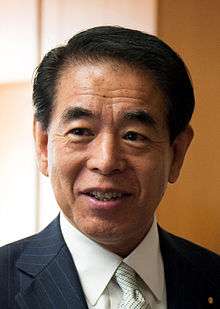Tokyo prefectural election, 2017
|
| ||||||||||||||||||||||||||||||||||||||||||||||||||||||||||||||||||||||||||||||||||||||||||||||||||
| ||||||||||||||||||||||||||||||||||||||||||||||||||||||||||||||||||||||||||||||||||||||||||||||||||
All 127 seats in the Tokyo Metropolitan Assembly 64 seats needed for a majority | ||||||||||||||||||||||||||||||||||||||||||||||||||||||||||||||||||||||||||||||||||||||||||||||||||
|---|---|---|---|---|---|---|---|---|---|---|---|---|---|---|---|---|---|---|---|---|---|---|---|---|---|---|---|---|---|---|---|---|---|---|---|---|---|---|---|---|---|---|---|---|---|---|---|---|---|---|---|---|---|---|---|---|---|---|---|---|---|---|---|---|---|---|---|---|---|---|---|---|---|---|---|---|---|---|---|---|---|---|---|---|---|---|---|---|---|---|---|---|---|---|---|---|---|---|
| ||||||||||||||||||||||||||||||||||||||||||||||||||||||||||||||||||||||||||||||||||||||||||||||||||
| ||||||||||||||||||||||||||||||||||||||||||||||||||||||||||||||||||||||||||||||||||||||||||||||||||
Prefectural elections for the Tokyo Metropolitan Assembly (平成29年/2017年東京都議会議員選挙, Heisei 29-nen/2017-nen Tōkyō togikai giin senkyo, "Heisei 29/2017 election of members of the Tokyo Metropolitan Assembly") were held on 2 July 2017. The 127 members were elected in forty-two electoral districts, seven returning single members elected by first-past-the-post, and thirty-five returning multiple members under single non-transferable vote. Four districts had their magnitude adjusted in this election to match population changes.
The results of the election persuaded Shinzo Abe to call a snap election, and led to the resignation of Renho as Democratic Party leader.
Background
LDP leader Shinzo Abe took office as Prime Minister following the 2012 general election and strengthened his position in the 2014 general election. However, Abe's government was subsequently struck by criticism for its handling of the Moritomo Gakuen scandal and controversial remarks by Defense Minister Tomomi Inada.[1] In the meantime, Yuriko Koike won the 2016 Tokyo gubernatorial election as an independent candidate, and left the LDP in June 2017 to found a new local political party, Tomin First, to challenge the LDP in the prefectural election.[2] At the time of the election, Koike was widely believed to be eyeing a future bid to replace Abe as prime minister.[1][2]
Candidates
| Party | Incumbents | Candidates | |||||
|---|---|---|---|---|---|---|---|
| Incumbents | Previous
representatives |
New | (Women) | ||||
| Liberal Democratic Party (LDP) | 57 | 49 | 0 | 11 | 60 | (6) | |
| Kōmeitō (Kōmei) | 22 | 19 | 0 | 4 | 23 | (3) | |
| Japanese Communist Party (JCP) | 17 | 11 | 1 | 25 | 37 | (17) | |
| Democratic Party (DP) | 7 | 7 | 6 | 10 | 23 | (6) | |
| Tomin First no Kai (Tomin) | 6 | 6 | 4 | 40 | 50 | (17) | |
| Tokyo Seikatsusha Network (Net) | 3 | 2 | 0 | 2 | 4 | (4) | |
| Nippon Ishin no Kai (Ishin) | 1 | 1 | 1 | 2 | 4 | (1) | |
| Social Democratic Party (SDP) | 0 | 0 | 0 | 1 | 1 | (1) | |
| Other | 0 | 0 | 1 | 16 | 17 | (4) | |
| Independent | 13 | 11 | 4 | 25 | 40 | (6) | |
| Total | 126
(1 vacancy) |
106 | 17 | 136 | 259 | (65) | |
Results
With counting almost complete, the seat distribution was as follows:[5][6][7]
- Supporters of Yuriko Koike won 79 seats in total: 49 by Tomin First no Kai, 23 by Kōmeitō, 1 by the Seikatsusha Net, and 6 by independents endorsed by Tomin;
- The LDP, previously the largest party, fell to 23 seats, their worst-ever result (their worst scores had previously been 38 seats, in the 1965 and 2009 elections);
- The Communist Party won 19 seats, improving further on their strong 2013 result;
- The DP was reduced to five seats and the single Ishin no Kai incumbent defended his seat.
Months after the Tokyo prefectural election, Abe called a snap general election for October 2017, and Koike established the new Kibo no To party to challenge the LDP nationally.
Results summary
| Party | Candidates | Votes | % | Seats (women) | ||
|---|---|---|---|---|---|---|
| Tomin First no Kai (都民ファーストの会) | 50 | 1,884,029 | 33.68 | 49 (17) | ||
| Liberal Democratic Party of Japan (自由民主党, Jiyū Minshutō) | 60 | 1,260,101 | 22.53 | 23 (1) | ||
| New Komeito Party (公明党, Kōmeitō) | 23 | 734,697 | 13.13 | 23 (3) | ||
| Japanese Communist Party (日本共産党, Nihon Kyōsan-tō) | 37 | 773,722 | 13.83 | 19 (13) | ||
| Democratic Party of Japan (民進党, Minshutō) | 23 | 385,752 | 6.90 | 5 (0) | ||
| Tokyo Seikatsusha Network (東京・生活者ネットワーク) | 4 | 69,929 | 1.25 | 1 (1) | ||
| Nippon Ishin no Kai (日本維新の会) | 4 | 54,016 | 0.97 | 1 (0) | ||
| Social Democratic Party (社民党 Shamin-tō) | 1 | 13,243 | 0.24 | 0 | ||
| Others | 17 | 43,092 | 0.77 | 0 | ||
| Independents (incl. Tomin endorsements) | 40 | 375,048 | 6.70 | 6 (1) | ||
| Total (turnout 51.3%) | 259 | 5,593,631 | 100.00 | 127 (36) | ||
| Source: Tokyo electoral commission | ||||||
Results by district
| District | # of seats | Total candidates | Elected/CandidatesEndorsements | |||||||||
|---|---|---|---|---|---|---|---|---|---|---|---|---|
| LDP | Kōmei | JCP | DP | Tomin | Net | Ishin | SDP | Other | Ind. | |||
| Chiyoda | 1 | 4 | 0/1Kokoro | 1/1Kōmei | 0/1 | 0/1JCP | ||||||
| Chūō | 1 | 5 | 0/1Kokoro | 1/1Kōmei | 0/1 | 0/21×JCP | ||||||
| Minato | 2 | 6 | 1/2Kokoro | 0/1 | 1/1Kōmei | 0/1 | 0/1Tomin | |||||
| Shinjuku | 4 | 7 | 1/2Kokoro | 1/1Tomin | 1/1 | 0/1 | 1/1Net | 0/1 | ||||
| Bunkyō | 2 | 3 | 1/1Kokoro | 0/1 | 1/1Kōmei | |||||||
| Taitō | 2 | 5 | 0/1Kokoro | 0/1 | 1/1Kōmei | 1Kōmei&Tomin/2 | ||||||
| Sumida | 3 | 5 | 1/2Kokoro | 1/1Tomin | 0/1 | 1/1 | ||||||
| Kōtō | 4 | 9 | 1/2Kokoro | 1/1Tomin | 1/1 | 0/1 | 1/1 | 0/1 | 0/21×Tomin | |||
| Shinagawa | 4 | 7 | 0/2Kokoro | 1/1Tomin | 1/1 | 0/1LP&Net | 2/2 | |||||
| Meguro | 3 | 5 | 0/2Kokoro | 1/1Tomin | 1/1 | 1/1Net | ||||||
| Ōta | 8 | 15 | 2/3Kokoro | 2/2Tomin | 1/2 | 0/1LP&Net | 2/2 | 1/1 | 0/1 | 0/3 | ||
| Setagaya | 8 | 18 | 3/3Kokoro | 1/1Tomin | 1/1 | 1/1LP | 2/2 | 0/1DP | 0/1 | 0/1LP | 0/2 | 0/5 |
| Shibuya | 2 | 5 | 0/1Kokoro | 0/1 | 0/1LP | 1/1Kōmei | 1/1Kōmei&Tomin | |||||
| Nakano | 3 (-1) | 6 | 0/1Kokoro | 1/1Tomin | 0/1 | 1/1LP&Net | 1/1 | 0/1 | ||||
| Suginami | 6 | 12 | 2/2Kokoro | 1/1Tomin | 1/1 | 0/2LP | 2/2 | 0/1DP | 0/2 | 0/1 | ||
| Toshima | 3 | 5 | 0/1Kokoro | 1/1Tomin | 1/1 | 0/1LP | 1/1 | |||||
| Kita | 3 (-1) | 5 | 0/1Kokoro | 1/1Tomin | 1/1LP | 0/1LP | 1/1 | |||||
| Arakawa | 2 | 7 | 0/1Kokoro | 1/1Tomin | 0/1 | 0/1 | 1Tomin/3 | |||||
| Itabashi | 5 | 10 | 0/2Kokoro | 1/1Tomin | 1/1 | 1/1LP&Net | 2/2 | 0/1 | 0/2 | |||
| Nerima | 6 | 10 | 1/2Kokoro | 1/1Tomin | 1/1 | 1/2LP | 2/2 | 0/1DP | 0/1 | |||
| Adachi | 6 | 9 | 1/2Kokoro | 2/2Tomin | 1/1 | 0/1LP | 2/21×Net | 0/1 | ||||
| Katsushika | 4 | 8 | 1/2Kokoro | 1/1Tomin | 1/1 | 0/1LP&Net | 1/1 | 0/2 | ||||
| Edogawa | 5 | 6 | 1/2Kokoro | 1/1Tomin | 1/1 | 2/2 | ||||||
| Hachiōji | 5 | 9 | 1/2Kokoro | 1/1Tomin | 1/1 | 0/1LP&Net | 2/2 | 0/1 | 0/1 | |||
| Tachikawa | 2 | 4 | 1/1Kokoro | 0/1 | 1/1Kōmei | 0/1Tomin | ||||||
| Musashino | 1 | 3 | 0/1Kokoro | 0/1LP&Net | 1/1Kōmei | |||||||
| Mitaka | 2 | 4 | 0/1Kokoro | 0/1 | 1/1LP&Net | 1/1Kōmei | ||||||
| Ōme | 1 | 3 | 0/1Kokoro | 1/1Kōmei&Net | 0/1JCP | |||||||
| Fuchū | 2 | 4 | 0/1Kokoro | 0/1 | 2/2Kōmei&1×Net | |||||||
| Akishima | 1 | 3 | 0/1Kokoro | 0/1 | 1/1Kōmei&Net | |||||||
| Machida | 4 (+1) | 8 | 1/2Kokoro | 1/1Tomin | 1/1 | 0/1LP&Net | 1/1 | 0/1 | 0/1 | |||
| Koganei | 1 | 5 | 0/1Kokoro | 1/1Kōmei | 0/31×JCP | |||||||
| Kodaira | 2 | 4 | 1/1Kokoro | 0/1 | 0/1LP&Net | 1/1Kōmei | ||||||
| Hino | 2 | 4 | 1/1Kokoro | 0/1 | 1/1Kōmei&Net | 0/1 | ||||||
| Nishi-Tōkyō | 2 | 4 | 0/1Kokoro | 0/1 | 1/1Kōmei | 1/1Tomin | ||||||
| Nishi-Tama | 2 | 4 | 1/1Kokoro | 0/1 | 1/1Kōmei&Net | 0/1Tomin&Net | ||||||
| Minami-Tama | 2 | 5 | 0/1Kokoro | 0/1 | 1/1Kōmei&Net | 1Tomin/2 | ||||||
| Kita-Tama 1 | 3 | 6 | 0/1Kokoro | 1/1Tomin | 1/1 | 0/1LP | 1/1 | 0/1 | ||||
| Kita-Tama 2 | 2 | 4 | 0/1Kokoro | 0/1LP | 1/1Kōmei | 1/1JCP, DP, Tomin | ||||||
| Kita-Tama 3 | 3 (+1) | 6 | 0/1Kokoro | 1/1Tomin | 1/1 | 1Tomin&Net/3 | ||||||
| Kita-Tama 4 | 2 | 4 | 0/1Kokoro | 1/1 | 1/1Kōmei | 0/1Tomin&Net | ||||||
| Islands | 1 | 3 | 1/1Kokoro | 0/1 | 0/1Kōmei | |||||||
| Total | 127 | 259 | 23/60 | 23/23 | 19/37 | 5/23 | 49/50 | 1/4 | 1/4 | 0/1 | 0/17 | 6Tomin/40 |
Most districts are coterminous with a municipality (-ku/-shi/-chō/-son) of the same name. The following districts comprise multiple municipalities:
- Nishi-Tama ("West Tama“; follows the original boundaries of the district of the same name, except Ōme): Fussa, Hamura, Akiruno, Hinohara, Hinode, Mizuho, Okutama
- Minami-Tama ("South Tama“; follows the boundaries of the former district of the same name): Tama, Inagi
- Kita-Tama dai-1 ("North Tama #1“; follows the boundaries of the former Kitatama district): Higashi-Murayama, Higashi-Yamato, Musashi-Murayama
- Kita-Tama dai-2 ("North Tama #2“): Kokubunji, Kunitachi
- Kita-Tama dai-3 ("North Tama #3“): Chōfu, Komae
- Kita-Tama dai-4 ("North Tama #4“): Kiyose, Higashi-Kurume
- Islands: Aogashima, Hachijō, Mikurajima, Miyake, Ogasawara, Kōzushima, Niijima, Ōshima, Toshima
Same-day elections
On the same day, the mayoral election in Kokubunji, Tokyo returned incumbent Kunio Izawa, backed by LDP and Komeito, against center-left supported (DP, JCP, LP, SDP, Net) former deputy mayor Michio Higuchi.[8][9][10] Another prefectural election on July 2 was the gubernatorial election in Hyōgo.[11]
References
- 1 2 "A local election in Tokyo may have just changed Japanese politics". Los Angeles Times. 2017-07-02. ISSN 0458-3035. Retrieved 2017-10-09.
- 1 2 Rich, Motoko (2017-07-03). "Tokyo Voters' Rebuke Signals Doubt About Shinzo Abe's Future". The New York Times. ISSN 0362-4331. Retrieved 2017-10-09.
- 1 2 都議選2017>党派別立候補者数. Tōkyō Shimbun (in Japanese). 2017-06-23. Retrieved 2017-06-23.
- ↑ Yomiuri Shimbun: Togisen 2017 (japanisch)
- 1 2 NHK News Web (short-term online availability), Shutoken studio, election coverage: Results Archived 2017-07-03 at the Wayback Machine.
- 1 2 Yomiuri Shimbun: Togisen 2017
- 1 2 Asahi Shimbun: 2017 togisen
- ↑ Tokyo Metropolitan election commission: 2017 electoral calendar of national, prefectural/Metropolitan and municipal elections in Tokyo
- ↑ Mainichi Shimbun, July 3, 2017: 国分寺市長選 井沢氏再選果たす 待機児童対策訴え /東京
- ↑ Kokubunji City electoral commission: On the 2 July 2017 elections of Metropolitan assembly members and city mayor, Mayoral election result (in Japanese)
- ↑ The Mainichi [English online edition of the Mainichi Shimbun], July 3, 2017: Incumbent Ido secures 5th term as Hyogo governor
External links
- Tokyo Metropolitan Government, Secretariat of the election administration commission: Turnout and Results of the 2017 Metropolitan Assembly election (pdf/excel) (in Japanese)



